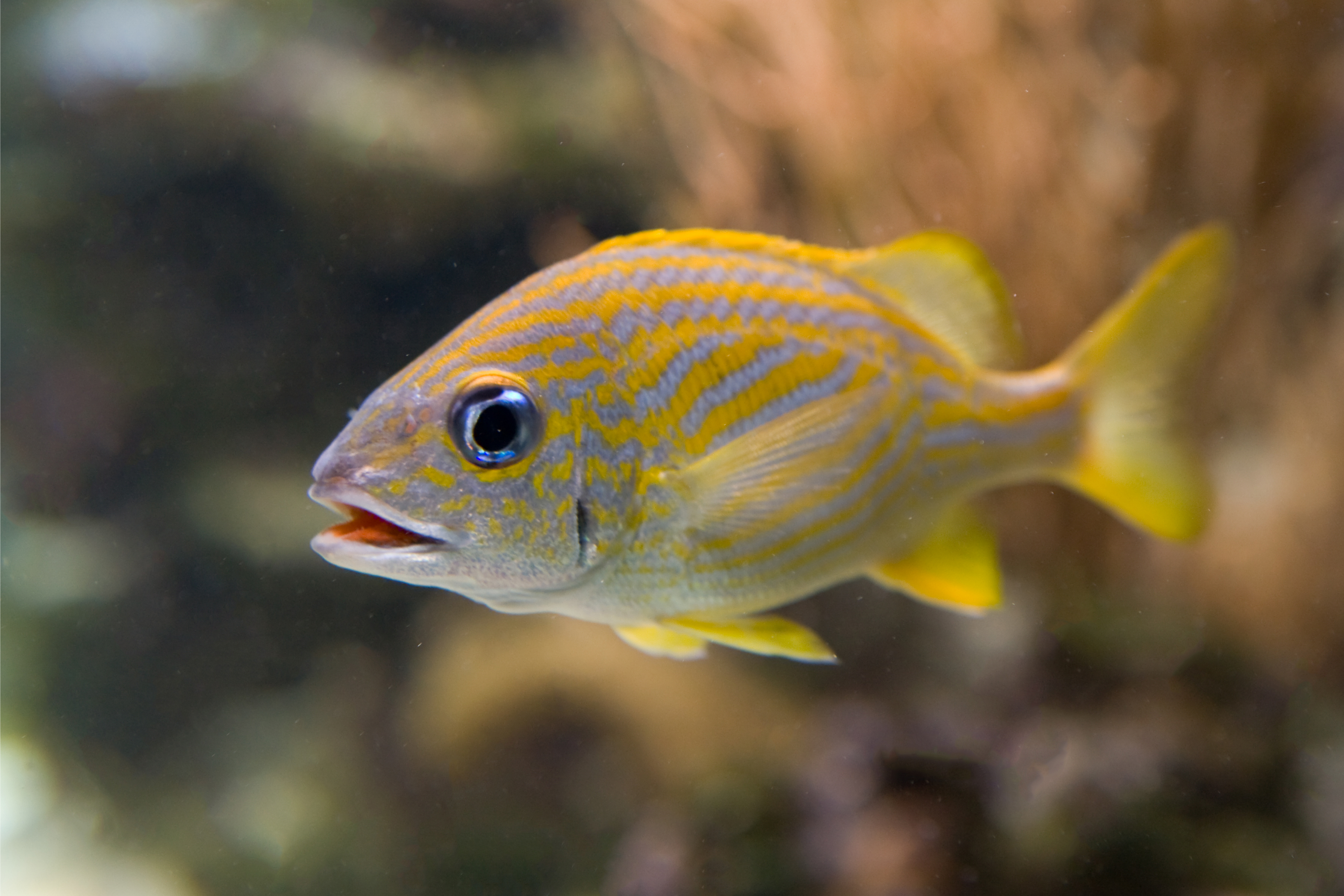Gray snapper
(Lutjanus griseus)

Description
The mangrove snapper or gray snapper (Lutjanus griseus) is a species of snapper native to the western Atlantic Ocean from Massachusetts to Brazil, the Gulf of Mexico, Bermuda, and the Caribbean Sea. The species can be found in a wide variety of habitats, including brackish and fresh waters. It is commercially important, as well as being sought as a game fish. It can also be found in the aquarium trade. Its color is typically greyish red, but it can change color from bright red to copper red. It has a dark stripe running across its eye if observed from the top when it is under water. This species can reach a length of 89 cm (35 in), though most do not exceed 40 cm (16 in). The greatest recorded weight for this species is 20 kg (44 lb). The mangrove snapper can be confused with the cubera snapper or black snapper, L. cyanopterus. Mangrove snapper are typically much smaller than cubera, but when they are of similar size, the two species can only be distinguished by examining the tooth patch on the inside roof of the mouth. Many specimens caught in Florida, specifically Punta Gorda, are actually misidentified dogtooth or dog snapper, L. jocu. The best way to distinguish between the two species is the dog snapper has a lighter triangle of color with a blue band under the eye and large, and sharp fangs in the front (canines), hence its common name. These fangs can deliver a painful bite, even in a small fish. The mangrove snapper feeds mostly on small fishes and crustaceans. It was also observed as systematically waiting under maternal colony of buffy flower bat for falling bats near the entrances of Lucayan cavern, Bahamas. The mangrove snapper is one of the most common species of snapper in warmer regions. It can be found in many areas from canals to grass flats, as well as in open water. Mangrove snapper also prefer structure, such as docks, mangroves, shipwrecks, and debris. Most mangrove snapper in the open water are generally found near bottom structure or reefs. They can be found at depths from 5 to 180 m (16 to 591 ft) though are mostly found at less than 50 m (160 ft).
Taxonomic tree:







